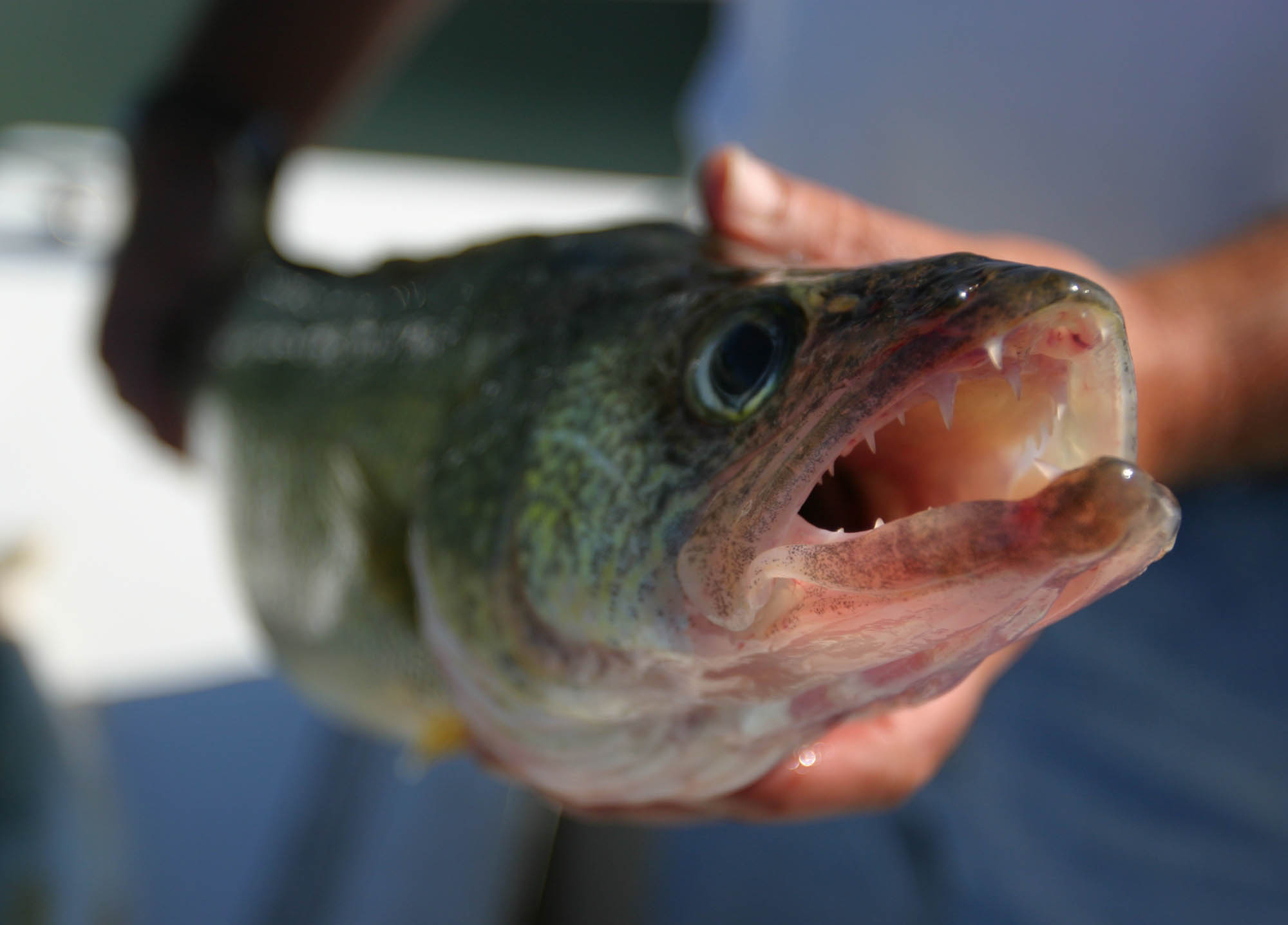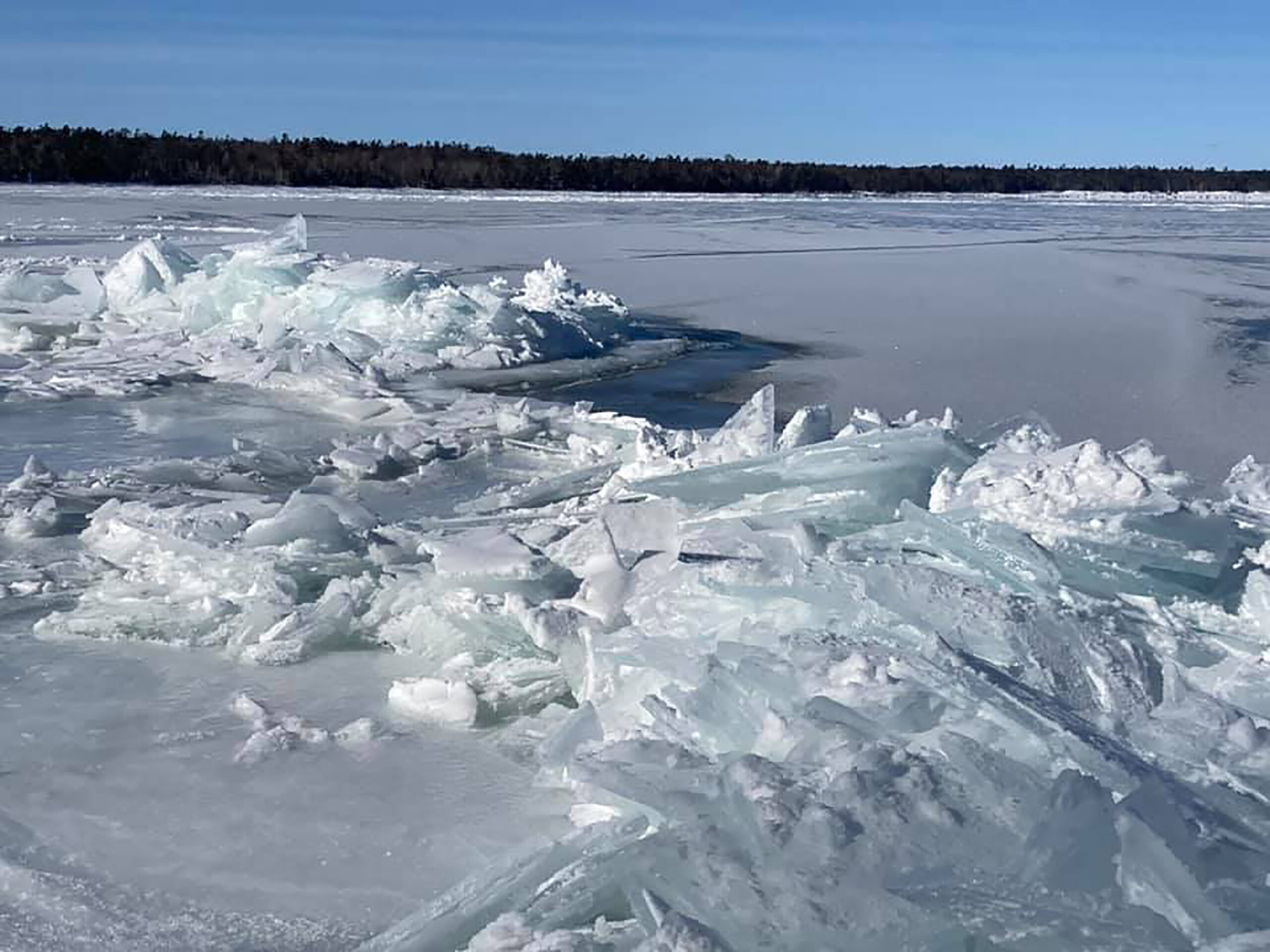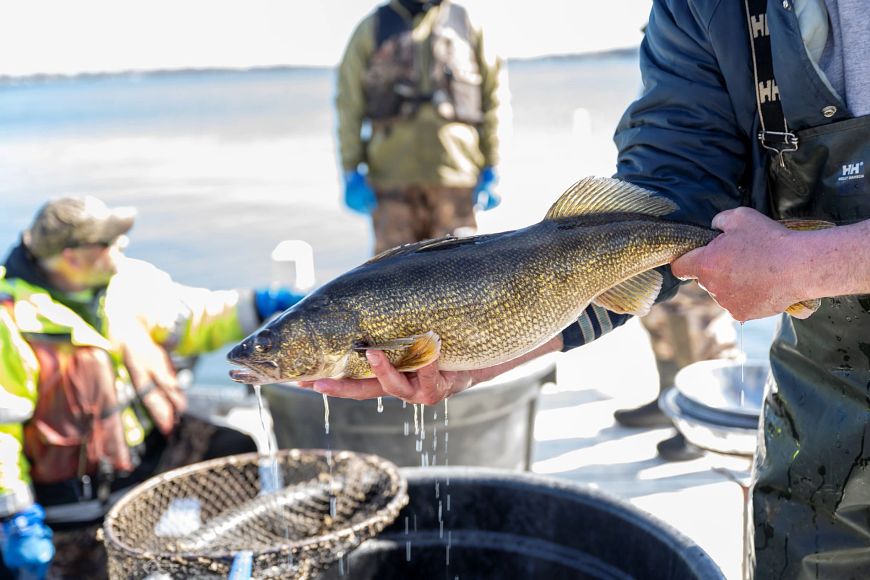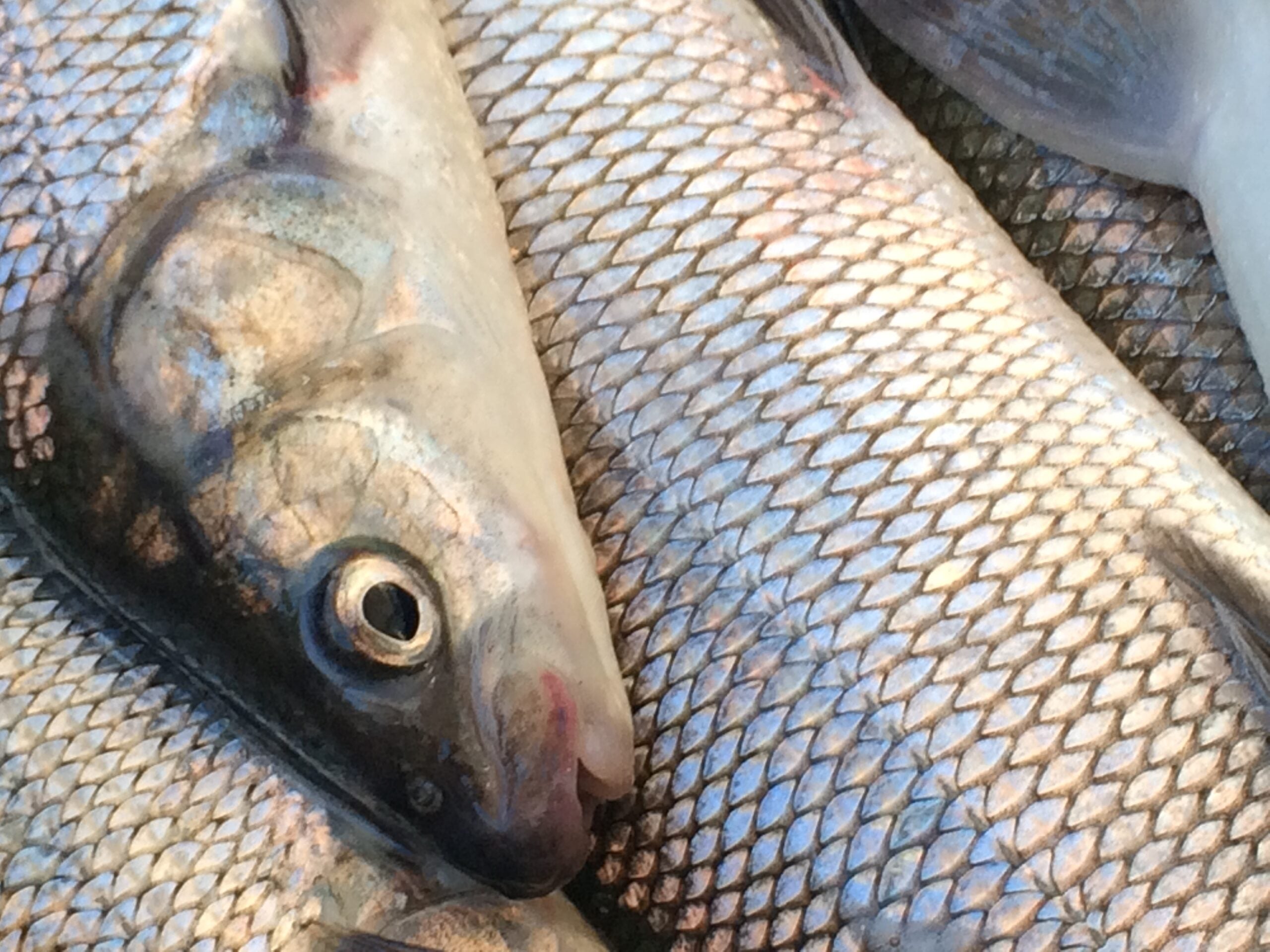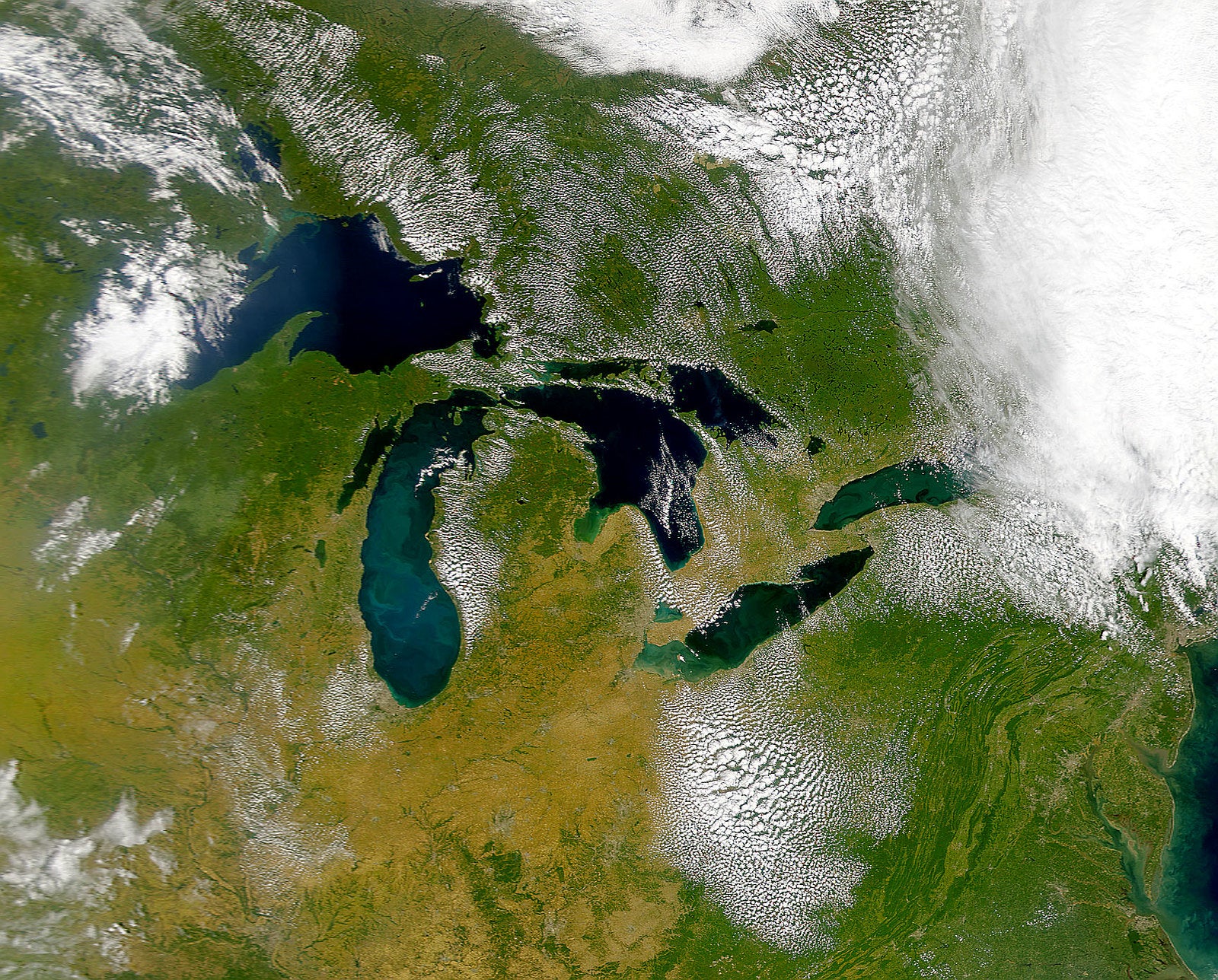Walleye are a staple of Native American diets, beloved for Friday night fish fries and a popular sporting fish. But the cool-water fish’s populations have been declining for decades, at the same time as largemouth bass have been thriving. Experts say climate change isn’t the only driver of walleye’s decline — but its impact is pervasive. In this series, WPR is exploring how the state can adapt to and mitigate the affect climate change is having on some of Wisconsin’s most iconic foods.
Arguably the most prized fish in Wisconsin, walleye hold a cultural significance that reaches far beyond being a thrilling fish to catch and a delicious fish to eat for the spear fishers and recreational anglers who harvest them.
But walleye populations have been declining for the better part of two decades.
News with a little more humanity
WPR’s “Wisconsin Today” newsletter keeps you connected to the state you love without feeling overwhelmed. No paywall. No agenda. No corporate filter.
While walleye at a Friday night fish fry haven’t come from Wisconsin in many years, they remain an important food source and tradition for Wisconsin tribes and part of an economically significant pastime — recreational fishing brings in more than $2 billion annually to the state.
Estimates say the sharp tooth predator’s production dropped nearly 30 percent between 1990 and 2012 and takes 1.5 times as long to grow to the same size and weight as it did in 1990.
The Great Lakes Indian Fish and Wildlife Commission (GLIFWC) identified walleye as a moderately to extremely vulnerable species in Wisconsin in its recent vulnerability assessment report.
What’s driving their decline?
Researchers point to climate change as a pervasive culprit, but it’s a complicated story with a lot of question marks.
Lakes are complex ecosystems and Wisconsin is home to a diverse variety — lake size and depth, water clarity and surrounding tree cover all influence how lakes respond to climate change.
And temperature affects every corner of a lake ecosystem.
Researchers know Wisconsin lakes aren’t too warm for walleye, a cool-water fish, to survive. They suspect it’s a recruitment (surviving to maturity) issue that has more to do with food sources and what species has the competitive edge.

Fishing in northern Wisconsin for walleye. USFWS Midwest Region (CC BY 2.0)
Challenges In Early Life
Just how rising temperatures and shorter winters are affecting walleye reproduction is an open research question, Gretchen Hansen, assistant professor in the Department of Fisheries, Wildlife and Conservation Biology at the University of Minnesota-Twin Cities, said, but it’s clear the first summer of a walleye’s life is the most precarious.
The walleye hatch early in the summer, but by the end of the summer large numbers have disappeared — what happened between those events has confounded researchers.
“We don’t know what happened to them, but they just don’t show up anymore,” Hansen said. “Maybe they didn’t find enough food, or they got eaten or some combination of both.”
Timing is everything. Hansen said there are theories that young walleye aren’t matching up with their food source at the correct time because of changing lake ice patterns, driven by an increase in erratic warm and cold snaps during winter and spring.
“You get better reproduction when … you have kind of a solid straight path towards spring,” Hansen said. “Not super variable temperature conditions, and we are seeing more variable conditions with climate change.”
David Bissonette, a Lac Courte Oreilles Tribe member and spear fisher, said spear fishers see lakes in a different way than others. They go out at night, with headlamps, in the springtime right after the ice melts.
When Bissonette was a kid, he associated walleye harvesting on Lake Chetac in Sawyer County with his cousin’s birthday, April 19, he said.
“But now … we’ve gone after that first week in April,” Bissonette said. “And then there also have been a couple times where we haven’t really been able to fish until the end of April.”
Walleye in Wisconsin generally spawn between mid-April and early May, and when the timing has been off, he hasn’t reached his walleye quota, he said.
Shift In Balance Of Power
At the same time walleye are struggling, another predator species appears to be thriving: the largemouth bass.
Small changes in temperature have a big impact, said Hansen.
“The thing with climate change is everything is affected by temperature — like everything,” she said.
Wisconsin Public Radio, © Copyright 2025, Board of Regents of the University of Wisconsin System and Wisconsin Educational Communications Board.

